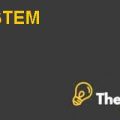Demographics and the Economy Case Study Soluion
The aftereffects of the global financial crisis of the last decade has left economists baffled in terms of finding reasons which could explain the disappointments experienced in the U.S and globally . In the light of their analysis, even major issues like the Euro meltdown or Fiscal severity do not seem as hard to comprehend as the issue of demographics (The Wall Street Journal, Greg Ip, Chief Economic Commentator, 2015).
Demographics play a major role in shaping an economy and these can have intense implications for financial markets, social stability, economics and geopolitics. With an estimated population of about 7.5 billion in 2016, the world population is expected to rise to about 10 billion in the next forty years. While some parts of the world like South Asia and Sub Saharan Africa will see a continued rapid growth, the most advanced and emerging economies are expected to see a potential rise in aging population along with shrinking working-age populations(Christine Lagarde, Managing Director, International Monetary Fund, 2016).
The population of an economy can be one of the most promising economic features of a nation while at the same time it can be its biggest weakness. Taking the example of one of the world’s prominent economies such as that of India, where the country’s large working-age population is one of its greatest assets while at the same time issues like unemployment for this population group is one of the greatest challenges in the economy. (Mark Fabian, 2016)
As per the findings of Pew Research Center on demographic trends, certain forces are driving population changes across the world and are reshaping lives globally. These trends are contributing towards a shift in lifestyles in the US economy specifically and so are affecting global economies as a whole. (Anthony Cilluffo and Dand D'Vera Cohn, 2017).
The Millennials or the population group born between the 1980s and 2000 are now the most influential generation in America and now as its members have begun to reach adulthood, this generation’s traits are formally taking shape (Rainer & Rainer, 2011). As per the estimates of 2016, these Millennials made up about 79.8 million of the population in the US while the Baby Boomers or those born between 1946 and 1964 were at 74.1 million showing how the latter have been surpassed. There is an expected continued rise in the Millennial’s population in the US especially because of a rise in immigration and this generation has started a shift in the lifestyle of the Americans especially as they have a low geographic mobility and a greater orientation towards living with parents rather than in any other living arrangement.
Demographics and the Economy Harvard Case Solution & Analysis
Changes have been seen in marital trends in the US as well. Considering the fact that only half of the US adults were married in 2015, a trend that has been followed for over a decade now, one can also say that the rate of marriage has also declined in the US economy given the fact that in the 1950s, 70% of the US population was married as compared to less than half in 2015.
Another emerging trend in the US economy has been a rise in multigenerational households where the household has two or more adult generations or grandchildren. The rise in multigenerational living in the US can be explained by the growing radical and ethnicdiversity in this region as there is an increase in the Asian and Hispanic populations in the US and these groups are more orientated towards multigenerational living.(Anthony Cilluffo and Dand D'Vera Cohn, 2017).
As per the earlier discussion regarding a rise in immigrants in the US and a decline in the rate of marriage, one can see a relationship between these factors and the overall trend in the working population in the economy. The US economy can see a significant dependence on these immigrants since without them there would be an estimated 18 million fewer working age adults in America because of the lack of children born from US born parents.
Although these immigrants form a major part of the private household workers group, they do not form a majority in any occupational group or industry in the US(Anthony Cilluffo and Dand D'Vera Cohn, 2017).As there is a shift towards the emerging trends of the Millennials, there is a rise in problems related to demographics too, For instance, as discussed earlier how demographics can be both an asset and a challenge, the US economy has problems in the form of homelessness too. Even though the fact remains that there is a rise in multigenerational living in the economy, the younger generation is still experiencing homelessness. In 2016, over one fifth of people experiencing homelessness in the US were children which made up 22% of the total homeless population. Out of these 69% were over the age of 24 while 9% were between the ages of 18 and 24 suggesting that the working age-population in the US is also suffering from unsuitable living conditions. (The 2016 Annual Homeless Assessment Report to Congress, 2016)....................
This is just a sample partial case solution. Please place the order on the website to order your own originally done case solution.











